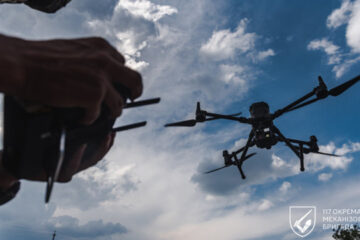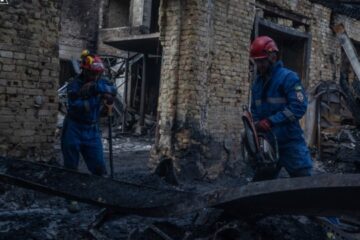
Aviation expert Valery Romanenko emphasized the exceptional success of the latest operation that resulted in the destruction of Russia’s Iskander ballistic missile launcher in Bryansk region, which he believes was a highly challenging task.
Romanenko spoke in a comment to Ukrinform.
“So it goes like this: a command vehicle moves out to the position, starts coordination, enters data in its computer, and then goes the launch. The full deployment cycle for the command vehicle is 30 minutes. So for everything we need, including detecting the system, launching our missile, approach time and destruction, there’s only 30 minutes,” he explained.
This time, the Defense Forces likely had enough time to strike, because the Russians were not wary of potential attacks, therefore they were in no hurry to move away from the launch position.
“They could have lingered a little, relaxing in the sun – because they did not feel any threat, so far no Iskander had been threatened by Ukrainian missiles,” he noted.
According to Romanenko, the successful completion of the mission could have been facilitated by ground reconnaissance and satellite intelligence.
“The Europeans have now adapted all satellite systems to monitor our territories, even rescue satellites that normally focus on accidents and disasters. European partners have few military intelligence satellites and we were unable to get data in real time from them,” he noted.
The problem has likely been tackled now and we are observing the result of cooperation with partners, the pundit believes.
“If we quickly receive intelligence from European satellites, this will improve our capabilities in destroying enemy launchers – it would be better to do so before the launches, but this isn’t bad when it happens even after them,” Romanenko said.
According to the expert, in order to further hit Iskander launchers, Ukraine should be able to monitor their movement from their base to the firing position before quickly preparing the strike. To this end, it is necessary to have enough appropriate weaponry.
“This will become possible as soon as we receive a sufficient number of Storm Shadow missiles (and similar weapons) or as soon as we get more of our own jet drones,” the expert emphasized.
Romanenko says piston-engine UAVs currently in service with the Defense Forces fly at 140 kmh, while jet engines allow them to fly four times faster, at least at 500 kmh. This will be of great importance if the ballistic missile launchers are moved much further away from the contact line than Klintsy (nearly 50 km from the border with Chernihiv region).
“You can’t even launch a UAV from the border as the enemy sees everything 50 km deep, the rear is under constant surveillance. But it is precisely because of this that we hunted down that Iskander,” the expert explained.
In his opinion, realizing that the launchers are at risk, the Russians may try to deploy them further away from the Ukrainian border strike from deep behind the frontline cities.
As reported, on June 5, Ukraine’s Army and the Security Service, in coordination with other elements of the defense forces, attacked an equipment and manpower cluster of Russia’s missile forces unit, hitting an Iskander ballistic missile launcher.
According to the General Staff of the Armed Forces, a unit of Russia’s 26th missile brigade deployed near Klintsy, Bryansk region, attempted to hit one of the Ukrainian settlements. Thanks to Ukraine’s effective reconnaissance and as a result of the coordinated effort, the targets were successfully hit. One Russian missile launcher detonated, and two more were highly likely damaged.
Photo from open sources
Source: Only 30 minutes to get job done – expert on complexity of attack on Iskander launchers



